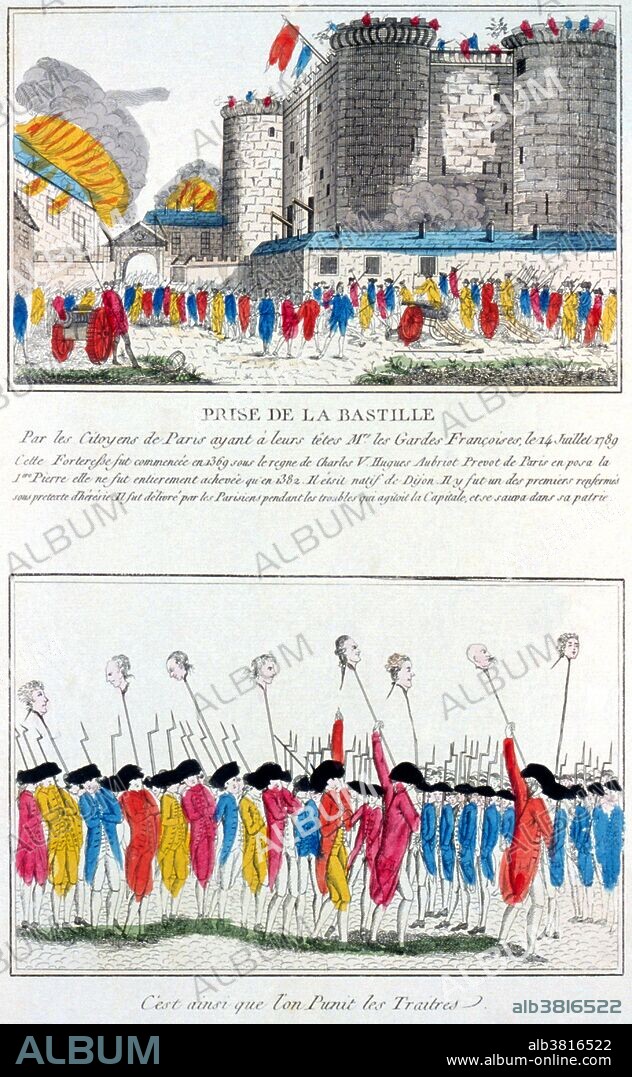alb3816522
French Revolution, Storming of Bastille, 1789

|
Add to another lightbox |
|
Add to another lightbox |



Title:
French Revolution, Storming of Bastille, 1789
Caption:
On July 14, in the wake of the July 11 dismissal of Jacques Necker, the people of Paris, fearful that they and their representatives would be attacked by the royal military, and seeking to gain ammunition and gunpowder for the general populace, stormed the Bastille, a medieval fortress and prison in Paris. Besides holding a large cache of ammunition and gunpowder, the Bastille had been known for holding political prisoners whose writings had displeased the royal government, and was thus a symbol of the absolutism of the monarchy. At the time of the siege there were only seven inmates, none of great political significance. When the crowd proved a fair match for the fort's defenders, Governor de Launay, the commander of the Bastille, capitulated and opened the gates to avoid a mutual massacre. But the fighting resumed and 98 attackers and one defender died in the actual fighting, but in the aftermath, de Launay and seven other defenders were killed. The storming became a symbol of the abuses of the monarchy and its fall was the start of the French Revolution. French sketching from 1789.
Credit:
Album / LOC/Science Source
Releases:
Model: No - Property: No
Rights questions?
Rights questions?
Image size:
2700 x 4375 px | 33.8 MB
Print size:
22.9 x 37.0 cm | 9.0 x 14.6 in (300 dpi)
Keywords:
1789 • 18TH CENTURY • 18TH CENTURY, THE • 18TH • ART • ARTFORM: ICON • ARTWORK • BASTILLE DAY • CELEBRITIES • CELEBRITY • CROWD • DRAWING • ETCHING • EUROPE • EUROPEA • EUROPEAN • EUROPEANS • EVENT • EVENTS • FALL OF BASTILLE • FAMOUS PEOPLE • FAMOUS • FRANCE • FRENCH NATIONAL DAY • FRENCH REVOLUTION (1789-99) • FRENCH REVOLUTION • FRENCH REVOLUTION,1789 • FRENCH • HAND-COLORED • HISTORIC • HISTORICAL • HISTORY • ICON • ICONIC • ILLUSTRATION • ILLUSTRATIONS • IMPORTANT • JULY 14 • JULY 14TH • LA FêTE NATIONALE • MEDIEVAL FORTRESS • MEDIEVAL PRISON • MEN • NOTABLE • PARIS • POLITICAL PRISON • PRISON • REVOLUTION 1789, FRENCH • REVOLUTION • STORMING OF BASTILLE • SYMBOL • SYMBOLIC • WELL-KNOWN • XVIII CENTURY
 Pinterest
Pinterest Twitter
Twitter Facebook
Facebook Copy link
Copy link Email
Email

